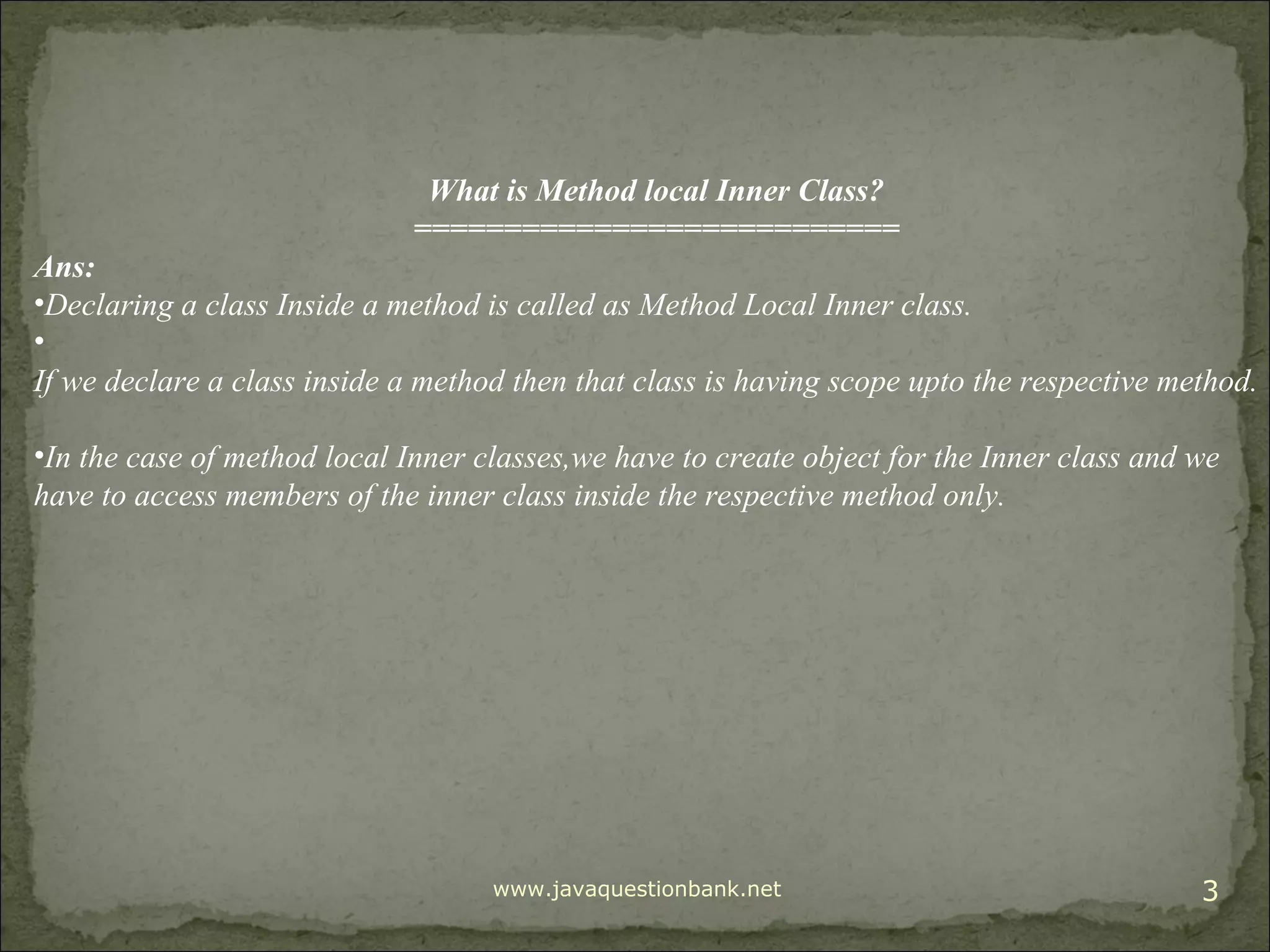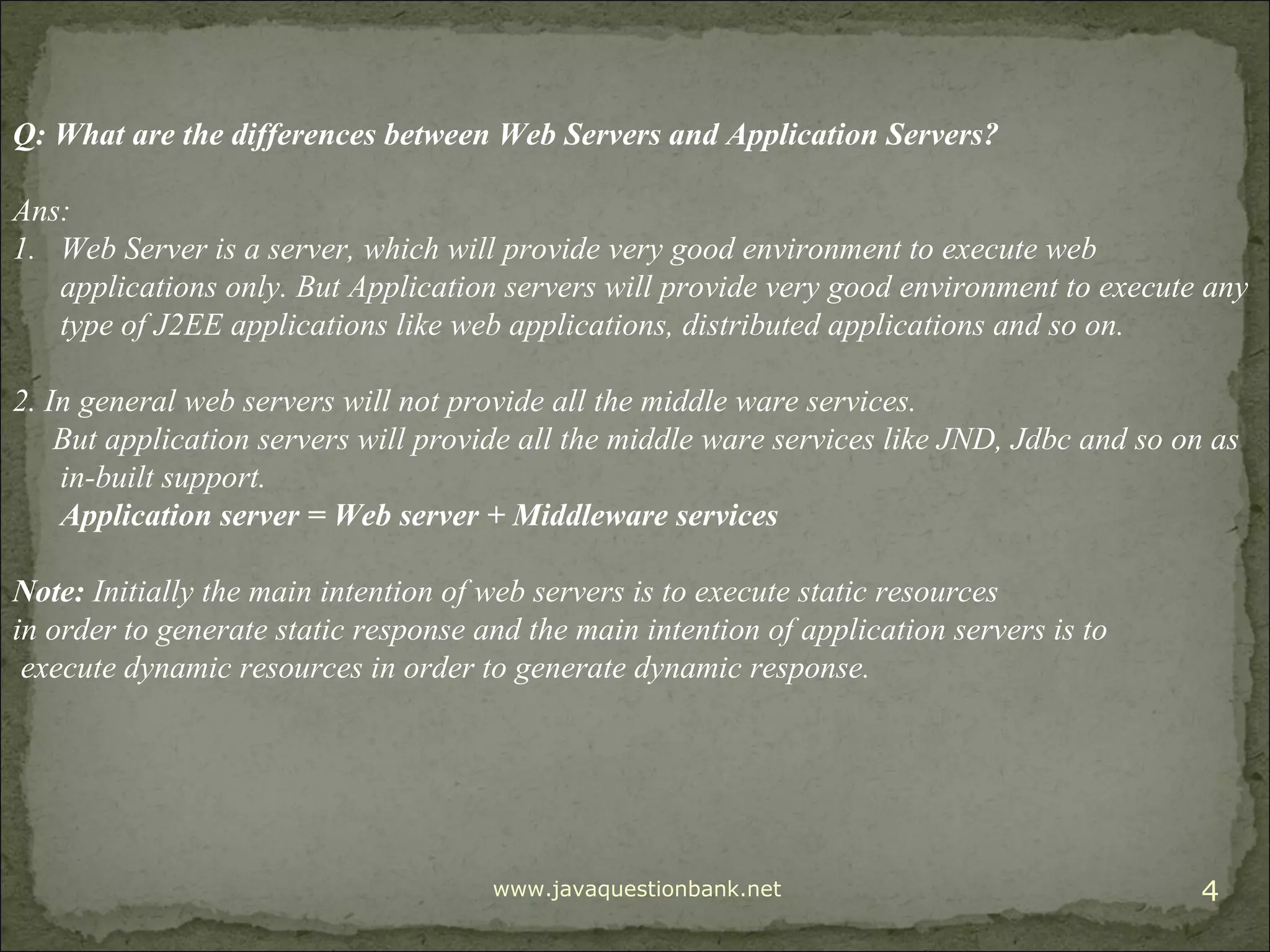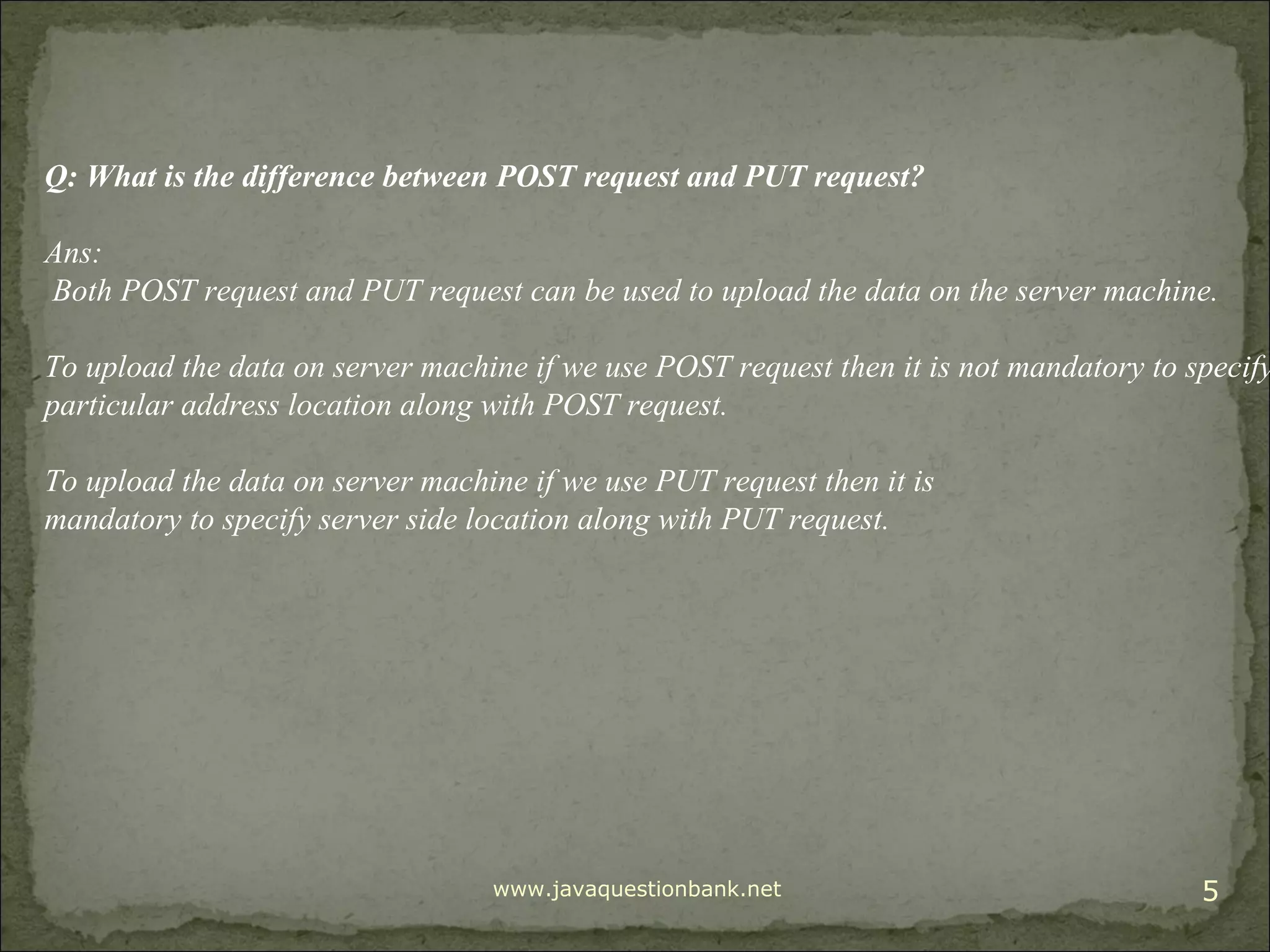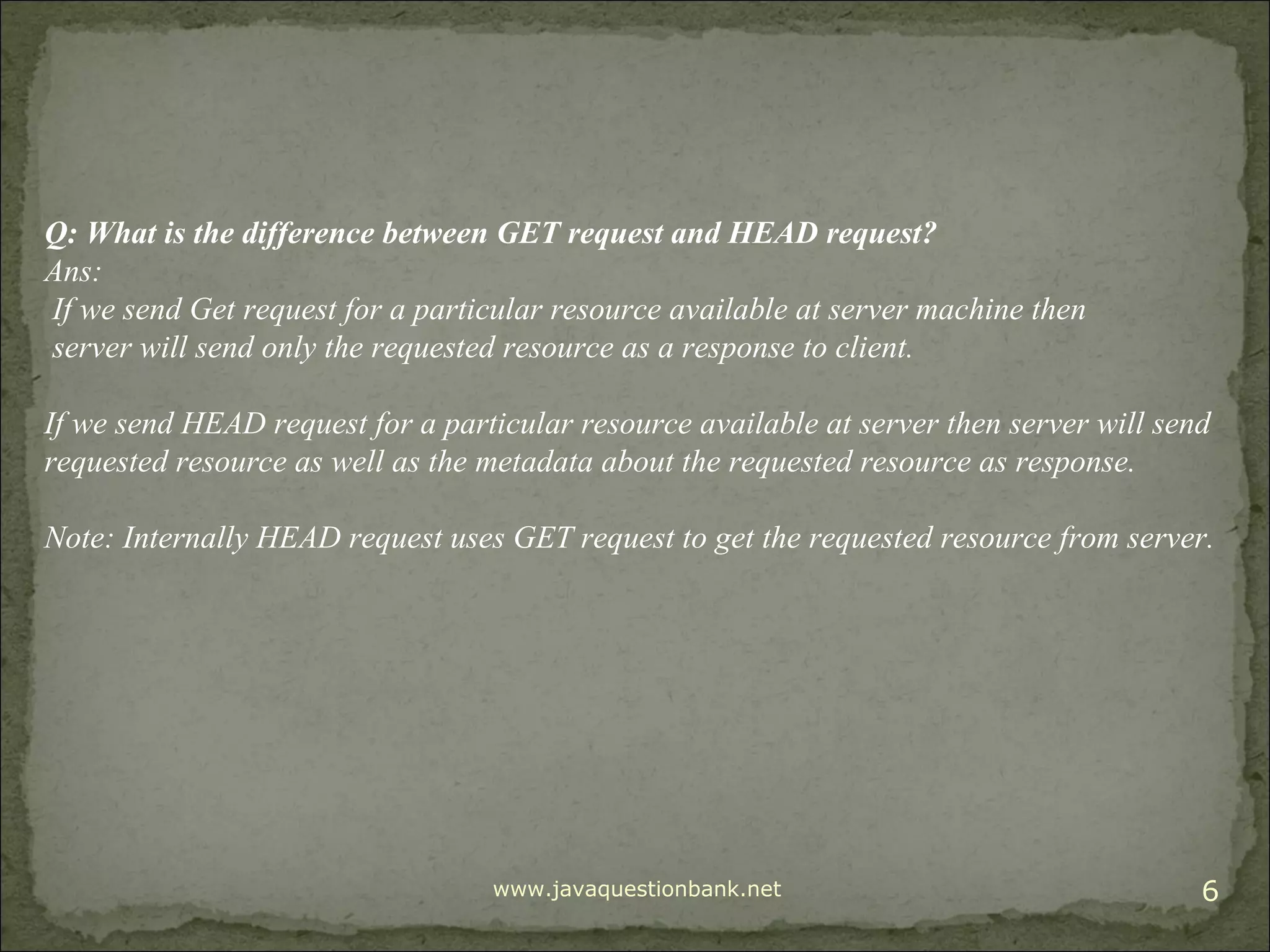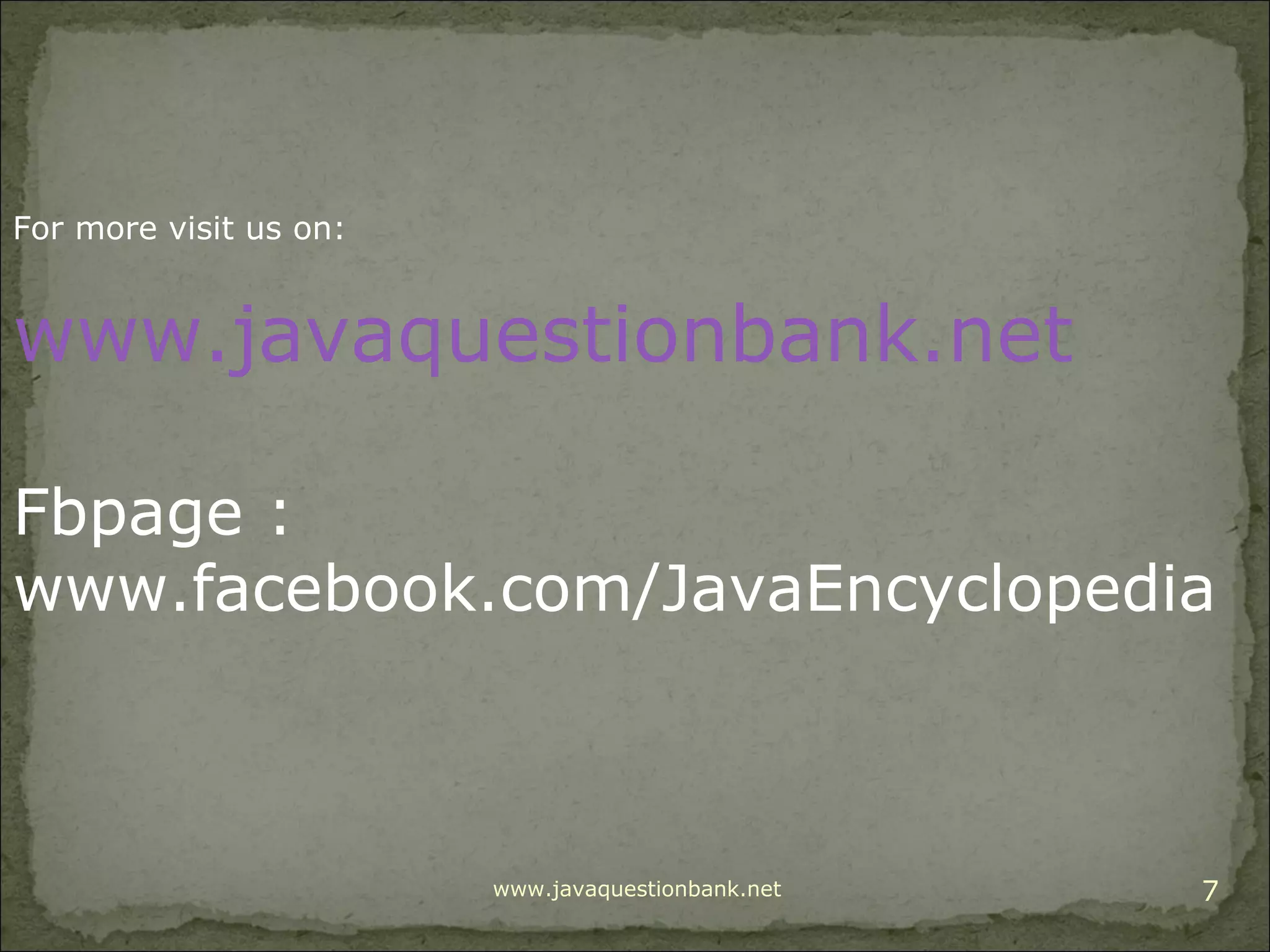The document provides explanations and examples of Java concepts, including the declaration of classes inside interfaces, the definition and scope of method local inner classes, and distinctions between web servers and application servers. It also contrasts HTTP request types, specifically POST vs. PUT and GET vs. HEAD requests. Additional resources and links to a Facebook page are included for further exploration.
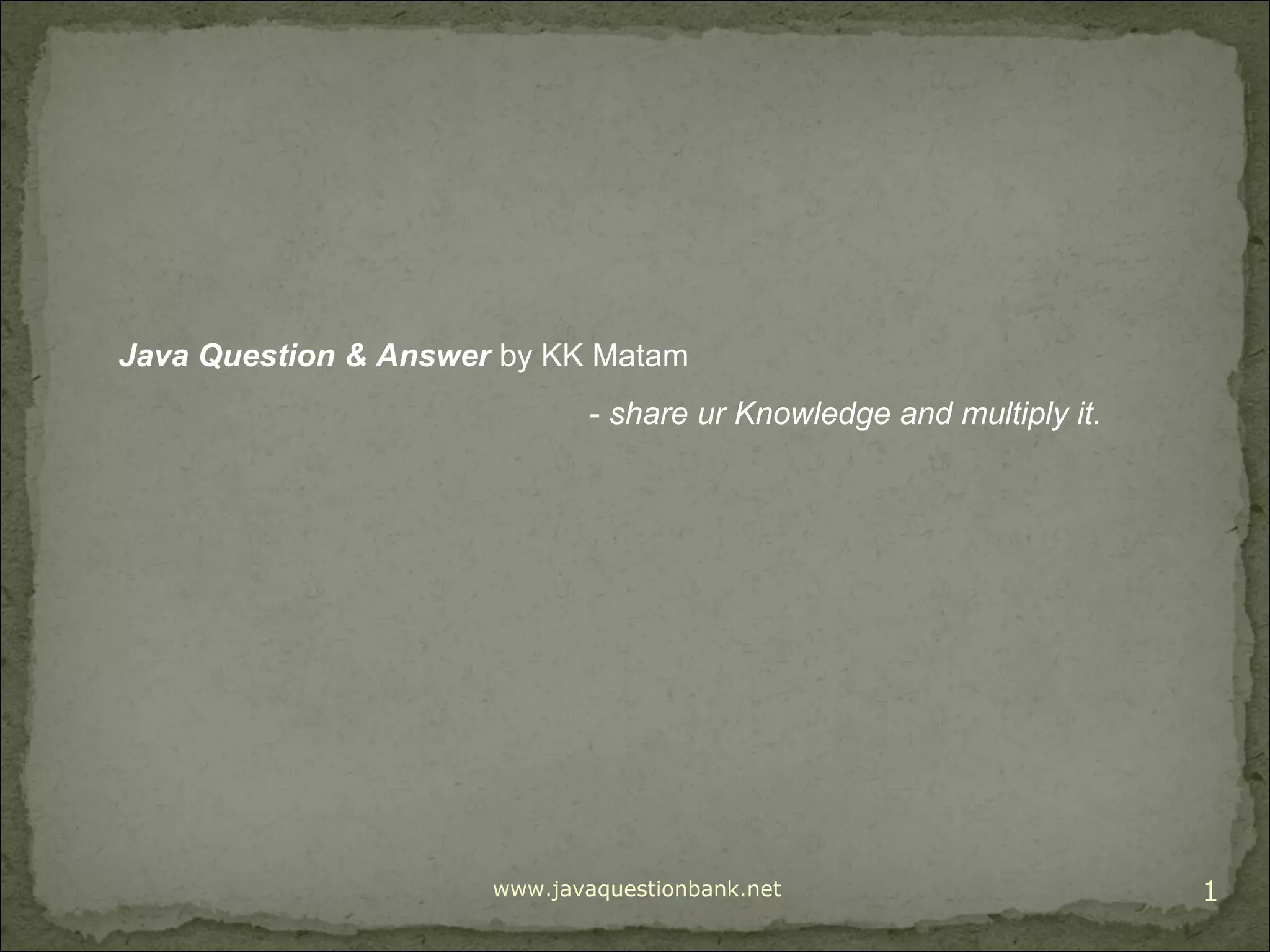
![www.javaquestionbank.net 2 Q)Is it possible to provide a class inside an Interface? ========================================== Yes,it is possible to declare a class inside an interface.If we declare a class inside an interface then that class is becoming as static inner class,where we can access the members like static inner class members. example interface I{ class A { void m1(){ System.out.println("m1-A");} void m2(){ System.out.println("m2-A");}} } class Test { public static void main(String args[]){ I.A ia=new I.A(); ia.m1(); ia.m2(); } }](https://image.slidesharecdn.com/javaqabykirankumarmatam-150118033813-conversion-gate02/75/Java-Question-Answers-I-2-2048.jpg)
